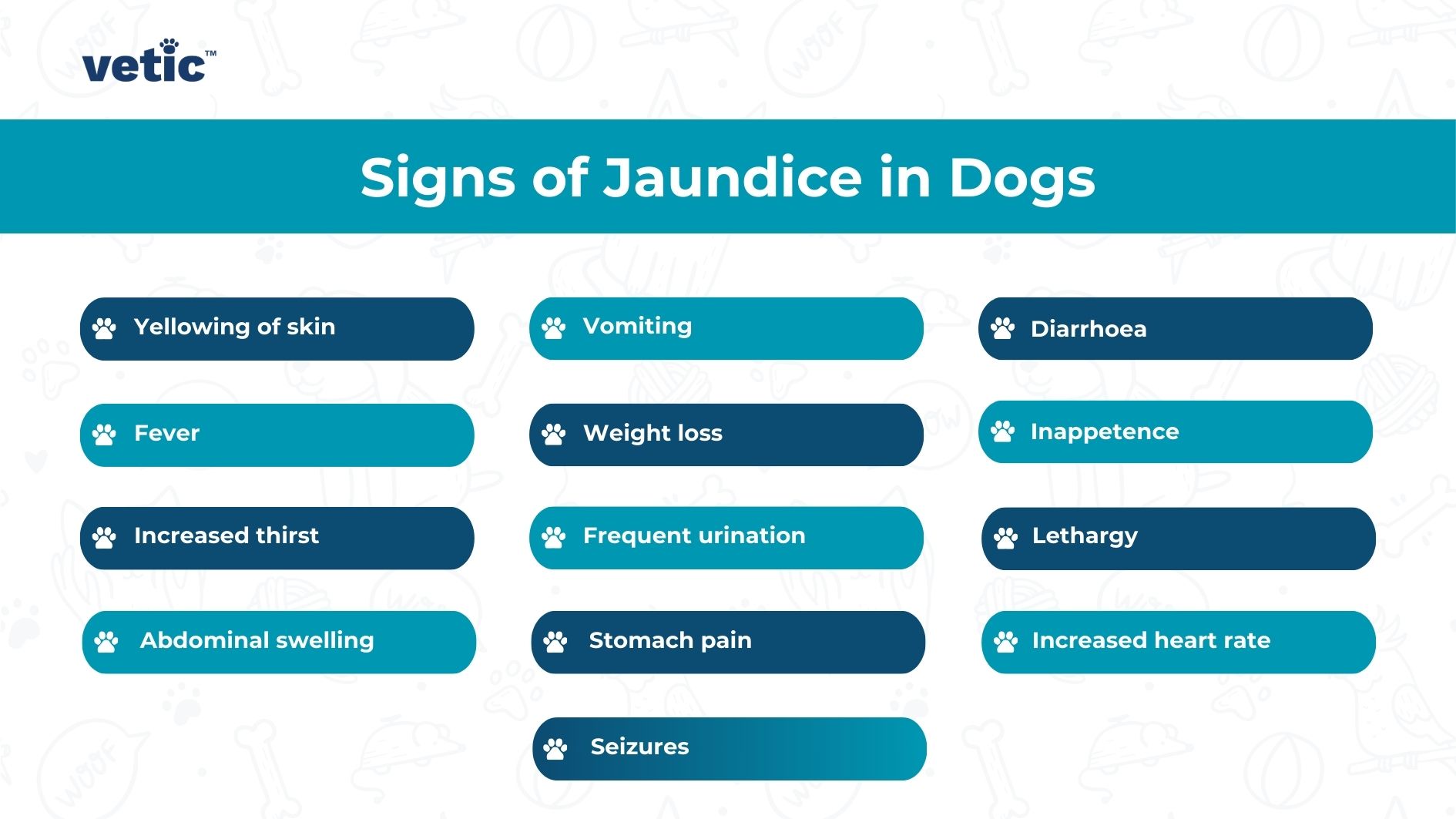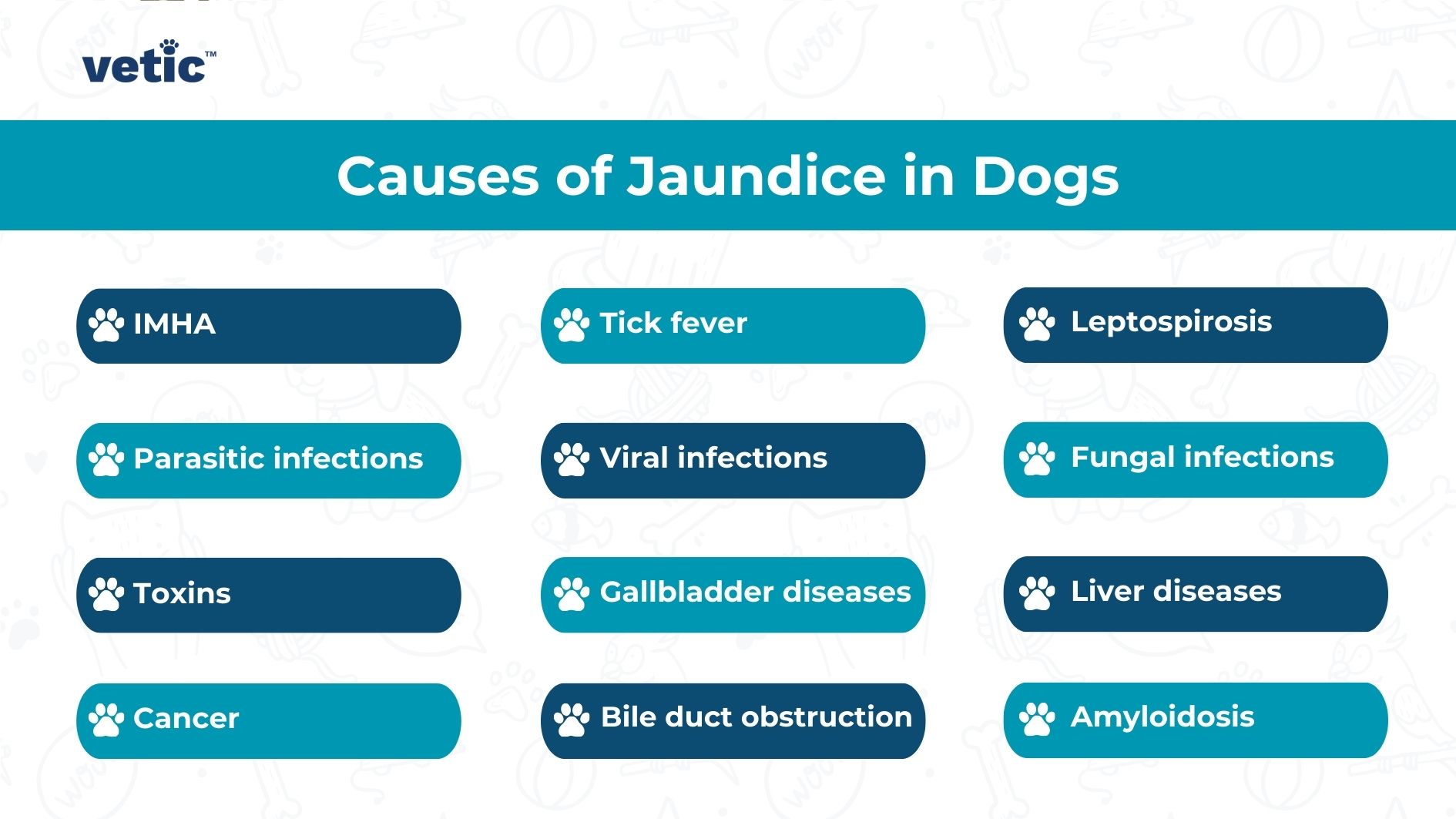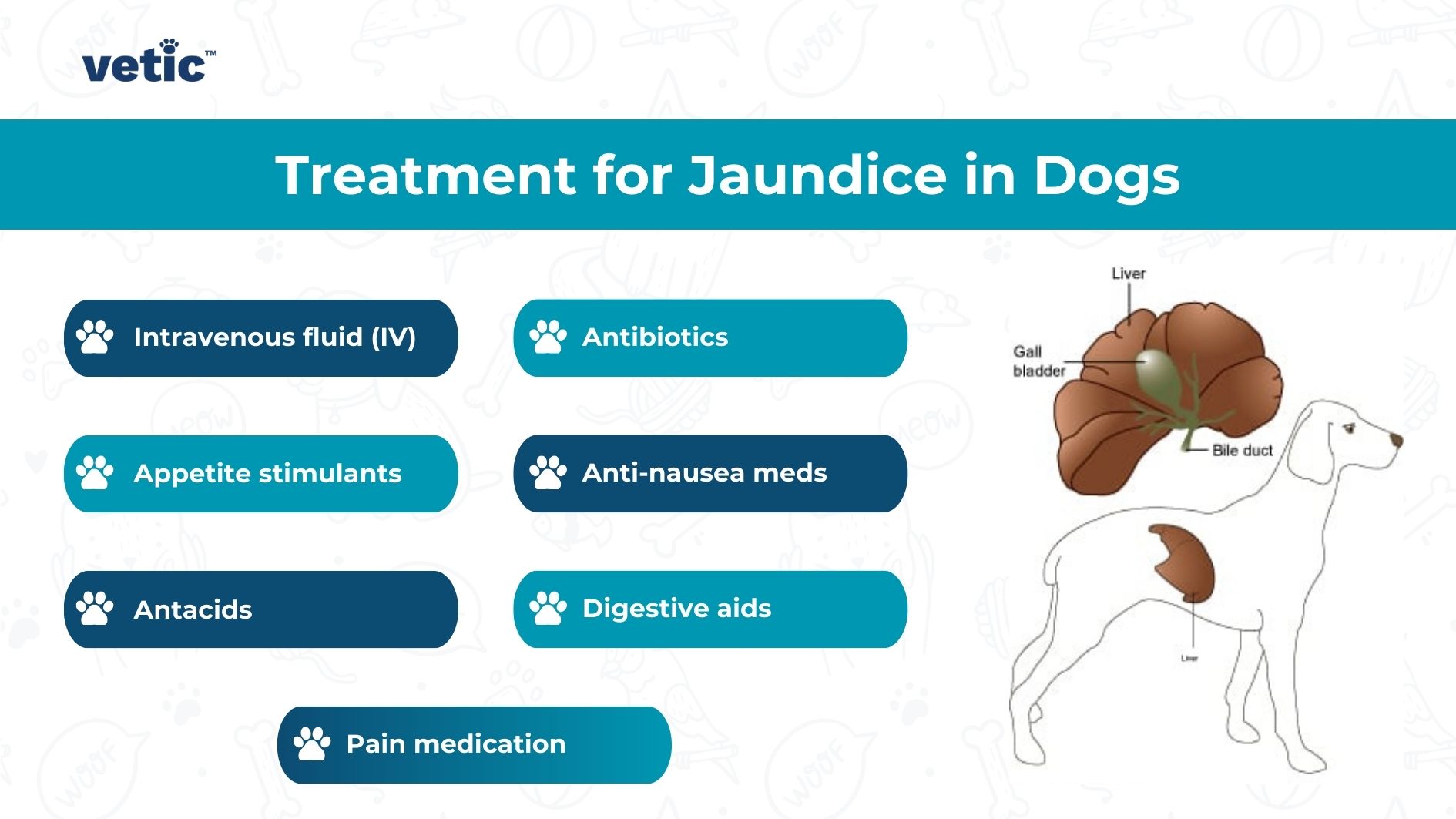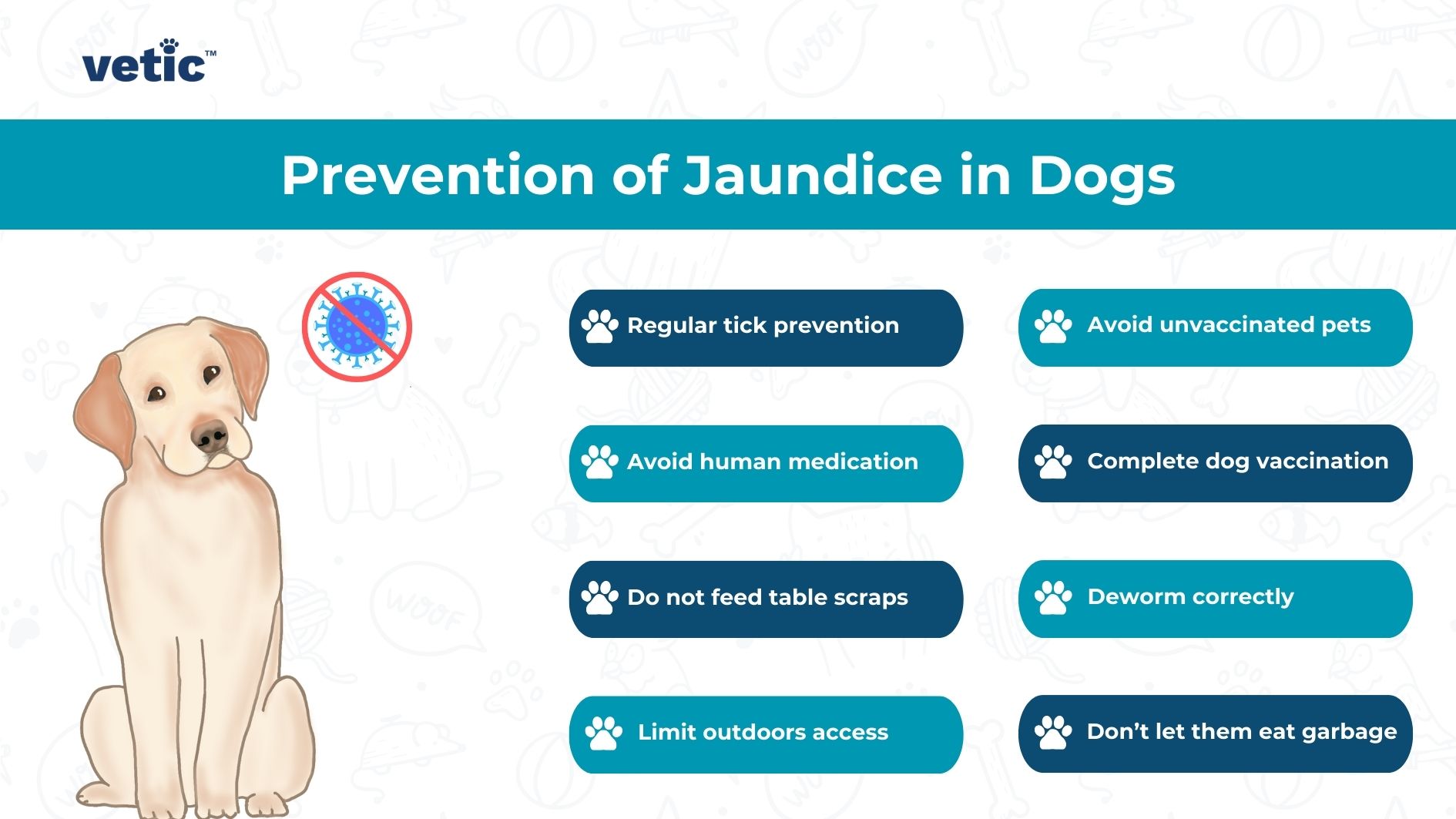What is Jaundice in Dogs?
Jaundice is the yellowing of the dog’s gums, skin and eyes. Jaundice in dogs is also known as icterus.
The yellowing is caused by the accumulation of bilirubin in the dog’s body. Bilirubin is the product of red blood cells (RBC) breakdown and reduced removal of broken down RBC from the body.
An increase in bilirubin level in the blood is known as hyperbilirubinemia. It is a sign of more serious issues in the body which are often life-threatening. Jaundice in dogs can be fatal and it is ALWAYS a medical emergency.
Jaundice isn’t a particular disease or the diagnosis of a disease. Jaundice or icterus in dogs is a sign that there is something wrong (such as an infection of the blood or impaired functioning of the liver) which is causing the rapid degeneration of the RBCs.
In India, jaundice is often associated with liver disease. In reality, any disease that affects the functioning and health of the liver can lead to jaundice.
What are the Signs of Jaundice in Dogs?
Since jaundice is just a sign and not a conclusive diagnosis, it can be caused by a number of diseases, disorders and/or conditions.

The main sign of jaundice is the yellowing of mucous membrane, and the other signs may include –
- Vomiting
- Diarrhoea
- Fever
- Weight loss
- Inappetence
- Increased thirst
- Frequent urination
- Lethargy
- Abdominal swelling
- Stomach pain
- Increased heart rate
- Seizures
The signs and symptoms of jaundice in dogs will vary depending upon the actual cause of icterus.
What Causes Jaundice in Dogs?

An increase in the bilirubin levels causes the yellowing of skin, gums and eyes. However, the cause of the increase in bilirubin level may include multiple diseases and disorders, such as –
- Immune-mediated hemolytic anaemia
- Tick fever (ehrlichiosis)
- Leptospirosis
- Parasitic infections
- Viral infections (adenovirus)
- Fungal infections (histoplasmosis)
- Toxins (aflatoxin, onion, garlic, acetaminophen, sago palm)
- Gallbladder diseases
- Liver diseases
- Cancer
- Bile duct obstruction
- Amyloidosis
How is Jaundice Diagnosed in Dogs?
If your dog is showing signs of jaundice, your veterinarian will recommend multiple tests to learn about the cause of the jaundice in dogs. These tests for jaundice in dogs include –
- Complete blood count (CBC)
- Liver function test (LFT)
- Alanine Transaminase (ALT)
- Aspartate Transaminase (AST)
- Alkaline Phosphatase (ALP)
- Gamma-Glutamyl Transferase (GGT)
- Serum bilirubin
- Prothrombin Time (PT)
- The International Normalised Ratio (INR)
- Total Protein
- Albumin
- Kidney function test (KFT)
- Ultrasonography (USG) of the abdomen
- Urinalysis
- Tick fever panel
If the cause of high bilirubin levels seems to be the liver, the veterinarian might take a sample from the liver (FNAC) and send it for histopathology or toxicology tests.
If your dog has been out of the country, been to a pool or boarding, you need to mention these to your veterinarian. A detailed history can help the doctor make a conclusive diagnosis.
Treatment of Jaundice in Dogs

Since the cause and progress of jaundice in dogs depends on the actual cause of the disease. Nonetheless, early diagnosis and treatment are the only ways to improve the prognosis.
In the early stages of the disease, medications and a special diet are the first line of treatment recommended by the veterinarian.
The most common supplements suggested by veterinarians contain high levels of silymarin, S-Adenosine Methionine, liver detoxifying and supportive vitamins and gallbladder supportive enzymes.
However, jaundice requires intense supportive care. This includes –
- Intravenous fluid (IV)
- Antibiotics (if bacterial)
- Appetite stimulants
- Anti-nausea medication
- Antacids
- Digestive aids
- Pain medication
In some cases, such as immune-mediated hemolytic anaemia, dogs may require careful administration of immunosuppressants such as cyclosporine. It is common if the patient has received a blood transfusion recently.
Other conditions such as cancer may require surgery, radiation and chemotherapy. Gallbladder stones and bile duct blockages may require immediate surgery to prevent further damage to the liver and kidneys of the pet.
You should understand that the liver is involved in the development of jaundice and icterus. If your dog has jaundice, it is imperative to reduce the stress on their liver. One way to achieve that is by opting for hepatic diets recommended by your veterinarian.
How Can You Manage Jaundice in Dogs?
Immune-mediated hemolytic anaemia, cancer and other chronic causes of jaundice in dogs require lifelong medication and hepatic diet.
Some causes of jaundice, such as gallbladder stones and ingestion of toxins may have a good prognosis, if treated aggressively.
You should always follow your veterinarian’s advice for quicker recovery and long-term health of your pup.
Can You Prevent Jaundice in Dogs?

Jaundice in dogs isn’t 100% preventable, but you can ensure better health and wellbeing for your pup by following these steps –
- Maintain regular tick and flea protection
- Avoid using human medication
- Do not feed table scraps
- Limit access to outdoors unsupervised
- Restrict contact with unvaccinated pets
- Complete their vaccination (DHPPiL)
- Administer anti-parasitics (dewormers)
- Don’t allow access to garbage
FAQs About Jaundice
Can you treat jaundice in dogs at home?
NO! This is a big “No-No” for all pet parents since some forms of jaundice such as leptospirosis can be contagious to humans. It requires proper diagnosis, treatment and regular therapy until complete recovery.
If one dog has jaundice are other dogs near him at risk?
If a dog has jaundice which isn’t caused by cancer, IMHA, gallstones or toxicosis, then other dogs can be at risk. Jaundice in dogs can be caused by bacteria, viruses and parasites. These can be contagious.
Can your cat get jaundice from your dog?
It is rare, but some cases have been recorded where cats have become affected by leptospirosis and tick fever that cause jaundice in dogs.
Your dog has recovered from jaundice. Do you need to continue liver supplements and hepatic diet?
Firstly, congratulations! Secondly, you should only discontinue liver support medicines and hepatic food once your veterinarian gives you the green signal.
